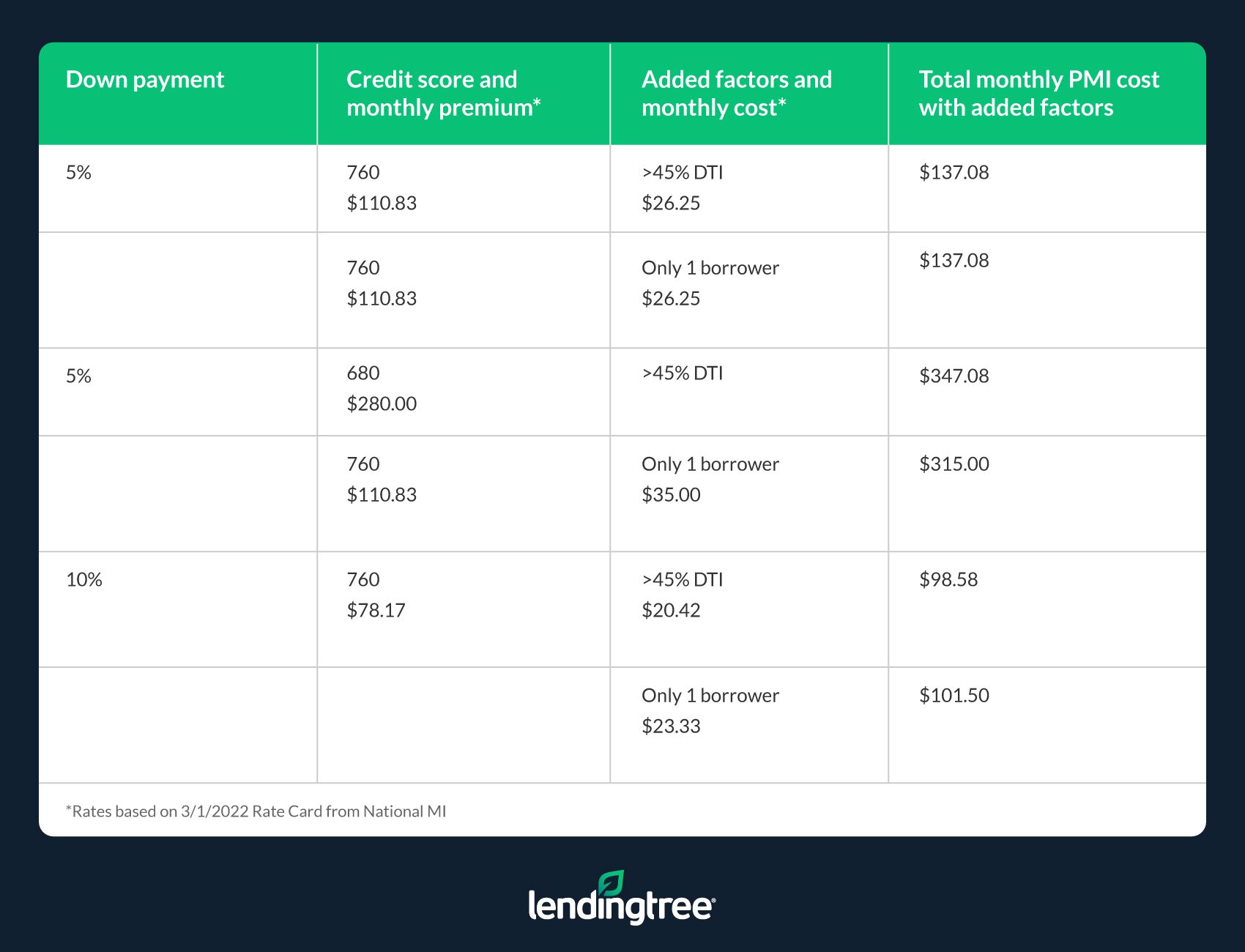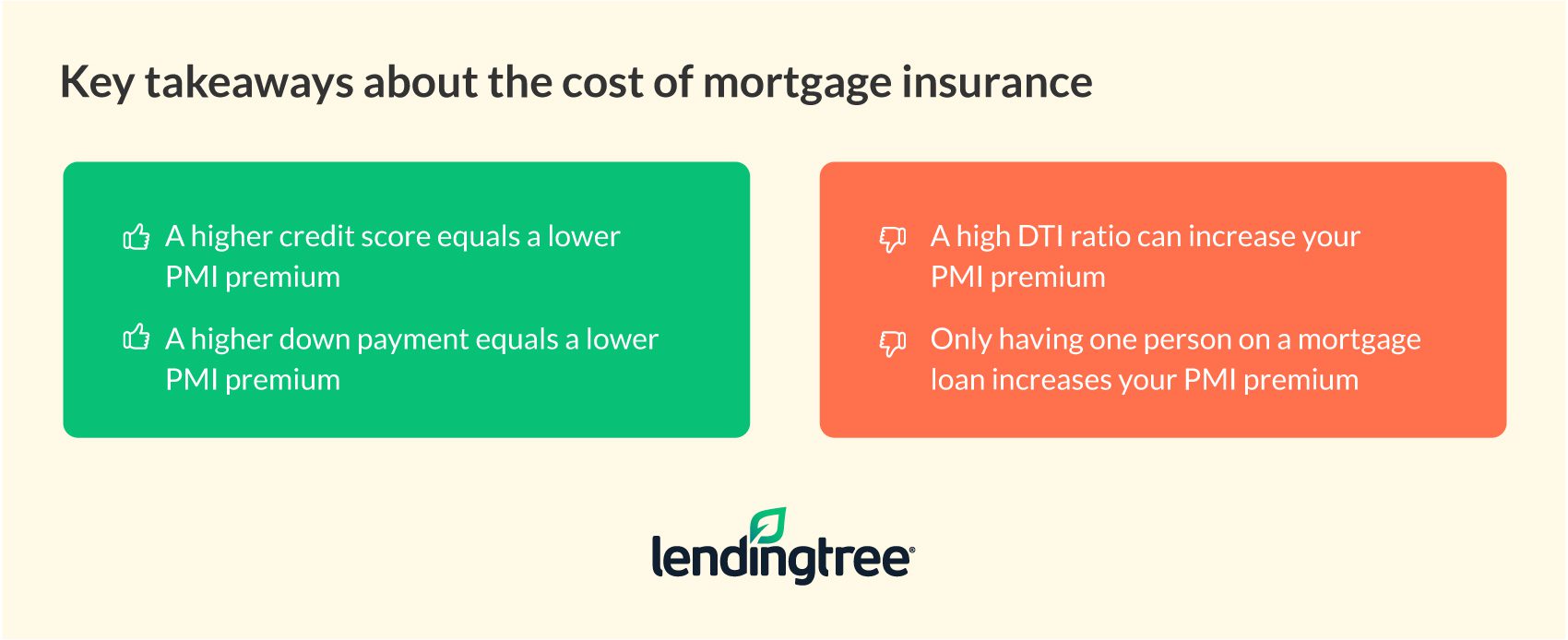What Is PMI? Everything You Need to Know About Private Mortgage Insurance
Private mortgage insurance (PMI) is usually required on a conventional loan if you can’t make at least a 20% down payment. Unlike homeowners insurance, PMI doesn’t protect you or your home — it only pays losses to your lender if you default on your mortgage.
The “private” in private mortgage insurance means it’s offered by privately owned companies and not the government. Knowing all your options may help you save money or even eliminate PMI altogether.
What is PMI?
Private mortgage insurance is an additional insurance policy to protect your lender if you cannot repay your mortgage. PMI only applies to conventional loans, which follow Fannie Mae’s and Freddie Mac’s guidelines.
You’re typically required to pay PMI monthly, up front or a combination of the two if you haven’t saved at least 20% toward the price of the home you’re buying with a conventional loan. Studies have shown it’s riskier for lenders to make loans with small down payments, which is why lenders charge PMI to low-down-payment borrowers.
How much is PMI?
You can usually expect to pay between $30 and $70 per month for every $100,000 you borrow. However, the amount you pay varies based on the nine factors we’ll explain in the next section.
The table below shows how quickly PMI costs can add up based on factors like down payment, credit score, debt-to-income (DTI) ratio and how many people are applying for the loan. The figures are based on a $350,000, 30-year fixed-rate mortgage assuming you choose monthly PMI.

*Rates based on 3/1/2022 Rate Card from National MI

Factors that affect the cost of PMI premiums
1. Your credit score and credit history. A higher credit score will snag you a lower PMI premium.
2. Your loan-to-value ratio. Your loan-to-value (LTV) ratio measures how much of your home’s value you’re borrowing. The lower your down payment, the higher your LTV ratio, and the more PMI you’ll pay.
3. Your occupancy. You’ll get the cheapest PMI if you’re buying a home you intend to live in as your primary residence. Expect to pay more for PMI for a second home.
4. The type of home you’re financing. Single-family home PMI usually costs the least. Multifamily homes, condos, townhomes and manufactured homes typically have higher premiums.
5. How many people are borrowing. You’ll get a slight PMI discount if you borrow with someone else, versus flying solo.
6. Your debt-to-income ratio. You’ll get the best PMI premiums if your total debt divided by your pretax income is less than 45%.
7. The term of the loan. You’ll get a break on your premium if you choose a loan term of 20 years or less, as long as you qualify with the higher monthly payment that comes with a shorter term.
8. The purpose of the loan. You’ll get the best PMI premiums if you buy or refinance your home without taking extra cash out.
9. Whether your rate is fixed or adjustable. Adjustable-rate mortgages (ARMs) with interest rates that can change in less than five years will require a higher PMI payment.
One major factor that can affect how long you’ll pay PMI is how much home equity you have after your purchase. Home equity is the difference between your home’s value and how much you owe. With each payment, your loan balance shrinks. Over time your home’s value will typically increase. Once you have 20% equity, you can request to have your PMI canceled.
Different types of PMI and how they’re paid
You’re not stuck with just one type of PMI, and you should explore the different types of private mortgage insurance to determine which works best for your mortgage.
Borrower-paid mortgage insurance (BPMI)
Monthly borrower-paid mortgage insurance (BPMI) is the most common PMI choice because it allows you to spread the cost out and add it to your monthly payment. The premium is based on a percentage of your loan amount and is part of your monthly mortgage payment.
Single premium mortgage insurance
This may also be called “upfront PMI” and allows you to prepay the premium in a lump sum to avoid paying it monthly.
Split PMI premium mortgage insurance
You can mix and match monthly and single premiums, paying a portion of the PMI up front and adding the remaining balance to your monthly payment.
Lender-paid mortgage insurance
If you agree to a bump in your mortgage interest rate, your lender may offer lender-paid mortgage insurance (LPMI). The lender pays the PMI premium on your behalf with this option. One big disadvantage: You’re stuck with the higher rate for as long as you have the loan unless you refinance your mortgage.
FHA mortgage insurance premiums
If you have low credit scores, your loan officer may suggest a loan backed by the Federal Housing Administration (FHA) because, unlike PMI premiums, FHA mortgage insurance premiums aren’t impacted by your credit score. However, there are three important things to understand about FHA mortgage insurance:
- You’ll pay it for the life of your loan if you make a minimum 3.5% down payment
- You have to pay both an upfront and monthly FHA mortgage insurance premium (you can’t choose one or the other like you can with conventional PMI)
- FHA mortgage insurance is required on all new FHA purchase and refinance loans, regardless of your down payment or how much equity you have in your home
How to decide which PMI is best for you
Use the table below for some guidance on which private mortgage insurance to pick.
| BPMI makes sense if: | Upfront PMI makes sense if: | Split PMI make sense if: | LPMI makes sense if: |
|---|---|---|---|
| You don’t have the extra savings to cover the cost | The seller is paying for it | The seller is paying for the upfront PMI | The payment is lower than the other options |
| You need to save your cash for closing and moving costs | You have extra funds to cover closing and moving costs | You want a slightly lower monthly PMI payment | You have high credit scores |
| You plan to move in the near future and won’t recoup upfront PMI costs | You’ll be in the home long enough to recoup the cost | You’ll be in the home long enough to recoup the upfront PMI cost |
Pros and cons of paying PMI
| Pros | Cons |
|---|---|
Makes buying a home with less than 20% possible | Doesn’t provide any protection for homeowners |
May be tax-deductible | May be too costly for borrowers with low credit scores |
Can be removed once you have 20% equity in your home | Increases your monthly payment or upfront costs |
Mortgage insurance may be tax-deductible, along with the mortgage interest you pay. Discuss whether the deduction makes sense based on your income with a tax professional.
How to cancel PMI
There are three ways you can remove private mortgage insurance.
- REFINANCE YOUR HOME. A refinance may make sense if current rates are headed lower while your home’s value is headed higher. If your new LTV ratio is 80% or less, you won’t need PMI on your refinance loan. However, you’ll spend 2% to 6% of your loan amount on closing costs, so make sure the break-even point is worth it.
- ASK YOUR LENDER TO CANCEL YOUR PMI. If home values are spiking in your area, you can contact your loan servicer and ask it to cancel your PMI if it looks like your loan balance is 80% of your home’s value. Your lender may require a new home appraisal, but the cost may be worth it if you can get rid of PMI.
- WAIT FOR IT TO DROP OFF ON ITS OWN. The PMI Cancellation Act requires that lenders stop charging you for monthly PMI once your loan balance reaches 78% of your home’s original value.
How to avoid paying PMI
If you don’t have the money to come up with a 20% down payment and don’t want to pay PMI, there are a few more options worth considering:
Get a piggyback loan. With this option, you’ll take out two mortgages to buy or refinance a home. The first loan covers most of the amount you borrow, and a second mortgage — usually a home equity loan or home equity line of credit (HELOC) — “piggybacks” onto the first to make up the difference. One popular piggyback option is the 80-10-10 loan. You make a 10% down payment and get a second mortgage for another 10%. The remaining 80% of your home’s value is financed with a first mortgage, eliminating the need for mortgage insurance.
Get a VA loan. Eligible military borrowers don’t have to pay mortgage insurance or a down payment if they qualify for a loan backed by the U.S. Department of Veterans Affairs (VA). However, they may have to pay a funding fee unless they’re exempt due to a service-related disability.
Frequently asked questions
No. Mortgage protection insurance, more commonly called mortgage life insurance, is a type of insurance policy that pays off your mortgage if you die before your loan balance is paid in full.
You can request to have your PMI canceled once you build up 20% equity. Also, your PMI must automatically be removed once your balance reaches 78% of the original value of your home.
In most cases, no. However, you can transfer your current PMI to a new loan if you’re eligible for a HARP replacement loan, which is exclusively for homeowners trying to refinance when their home is worth less than their current mortgage balance.
